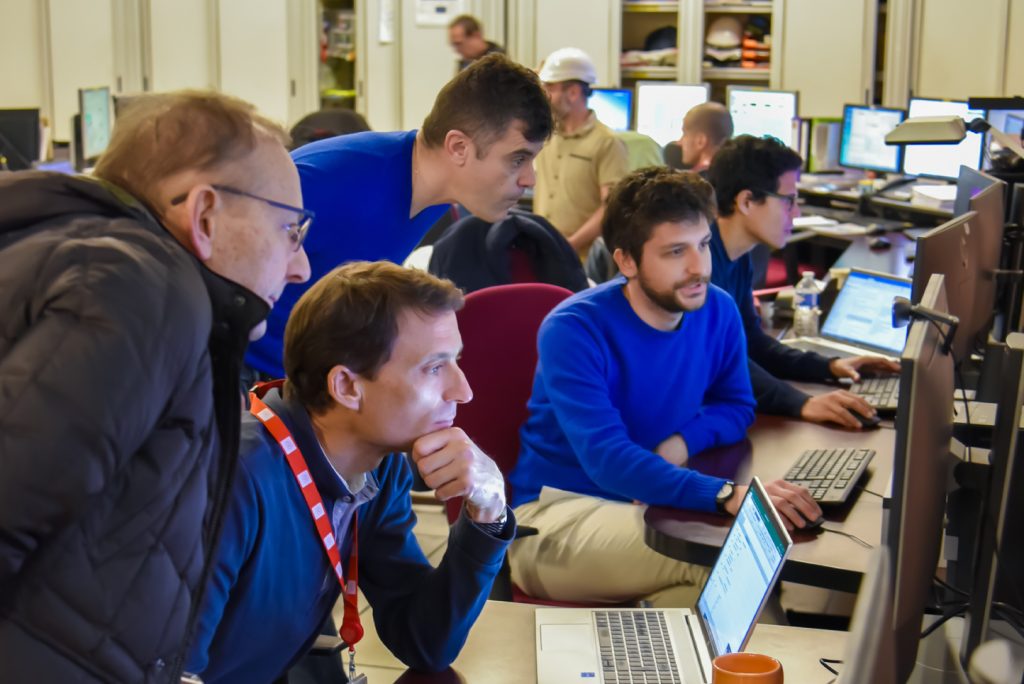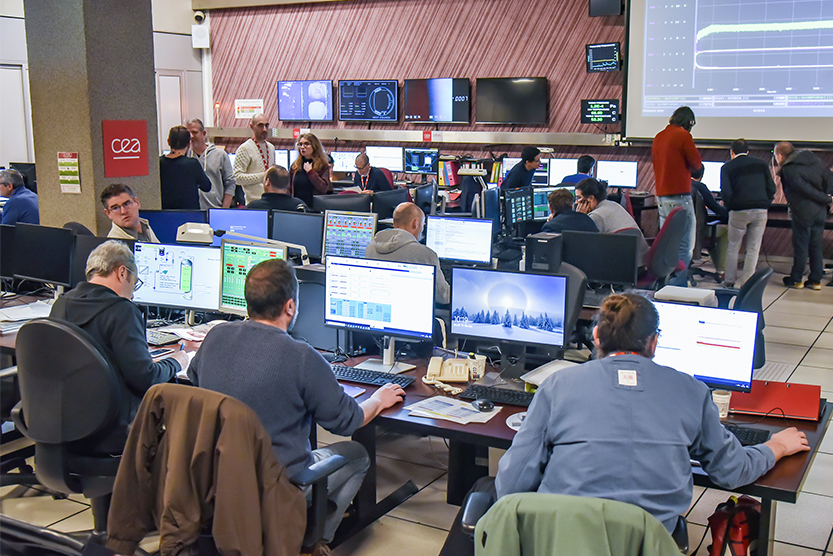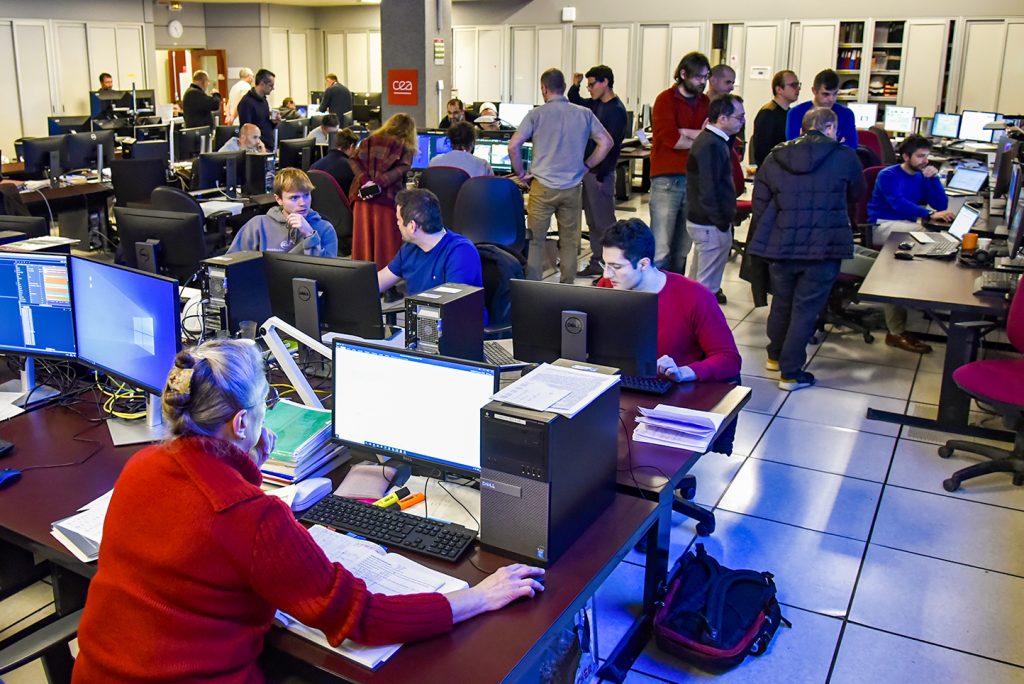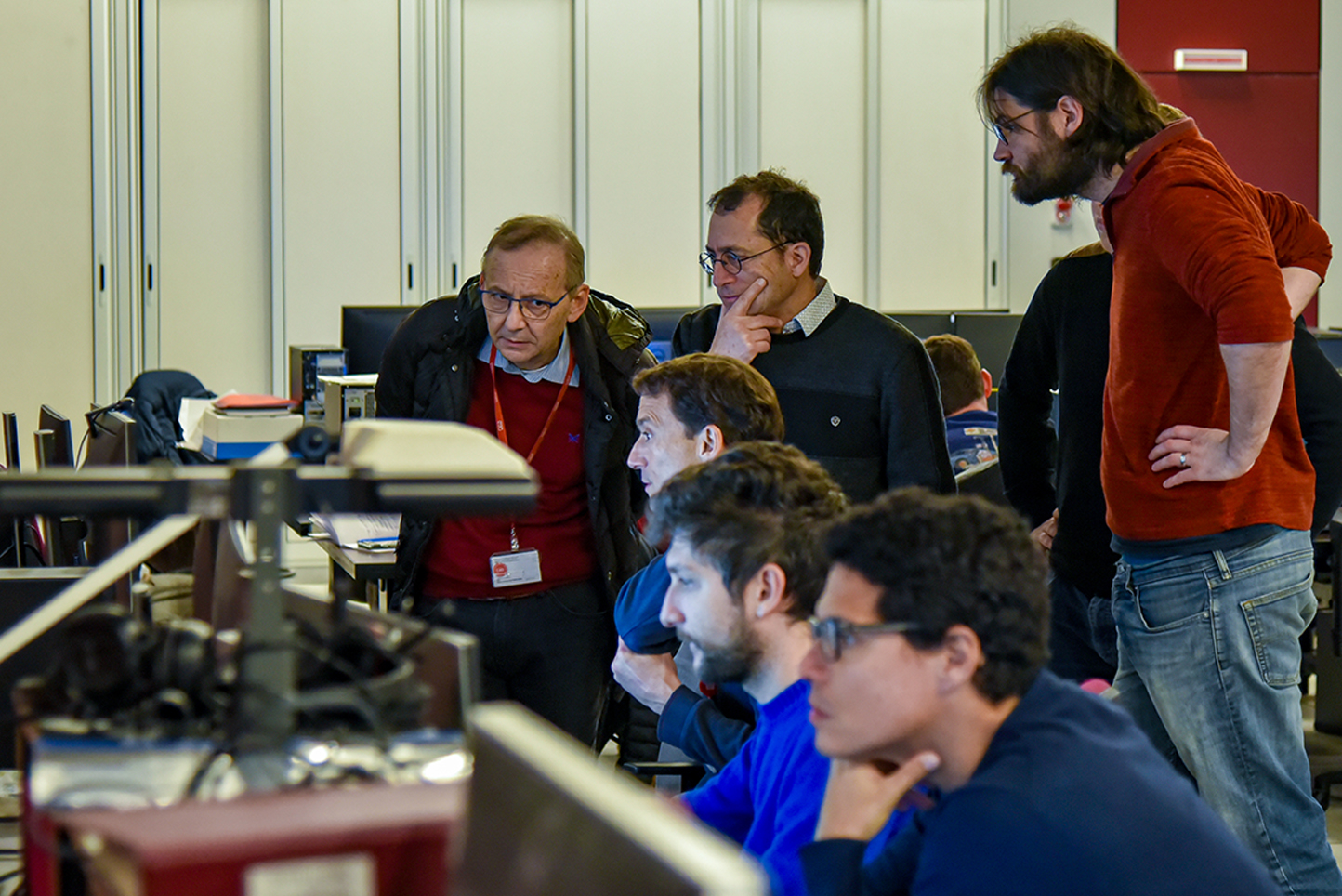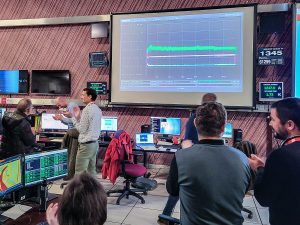On February 12, scientists from CEA-IRFM sustained a hydrogen plasma in the WEST Tokamak for 1337 seconds, approximately 22 minutes, with an injected and extracted energy of 2.6 GJ: an excellent result promising for ITER and fusion energy research!
Numerous experiments are scheduled on the WEST Tokamak to develop fusion energy, supporting the future operation of ITER and in collaboration with many EUROfusion and international laboratories. The experiments planned for Wednesday, February 12, and Thursday, February 13, aimed to achieve long-duration plasmas and attempt to exceed 1000 seconds, one of WEST’s major objectives. The experimental campaign that ended in December 2024 had already provided excellent results, including a plasma duration of 824 seconds with 1.93 GJ of injected energy.
For these long-duration plasmas, scientists from CEA-IRFM use one of the plasma heating antennas using lower hybrid radiofrequency waves, called LH antennas. In the record plasma, a heating power of 2 MW is injected by a single antenna. It generates a current in the plasma by accelerating electrons and thus stabilizes it. On Wednesday, February 12, a first hydrogen plasma with a duration of 819 seconds was achieved, demonstrating the robustness of the previously used scenario. The following plasma, number 61299, was sustained for 1337 seconds, or 22 minutes, with a power injected by the LH system and extracted by the actively cooled tungsten components facing the plasma of 2.6 GJ.
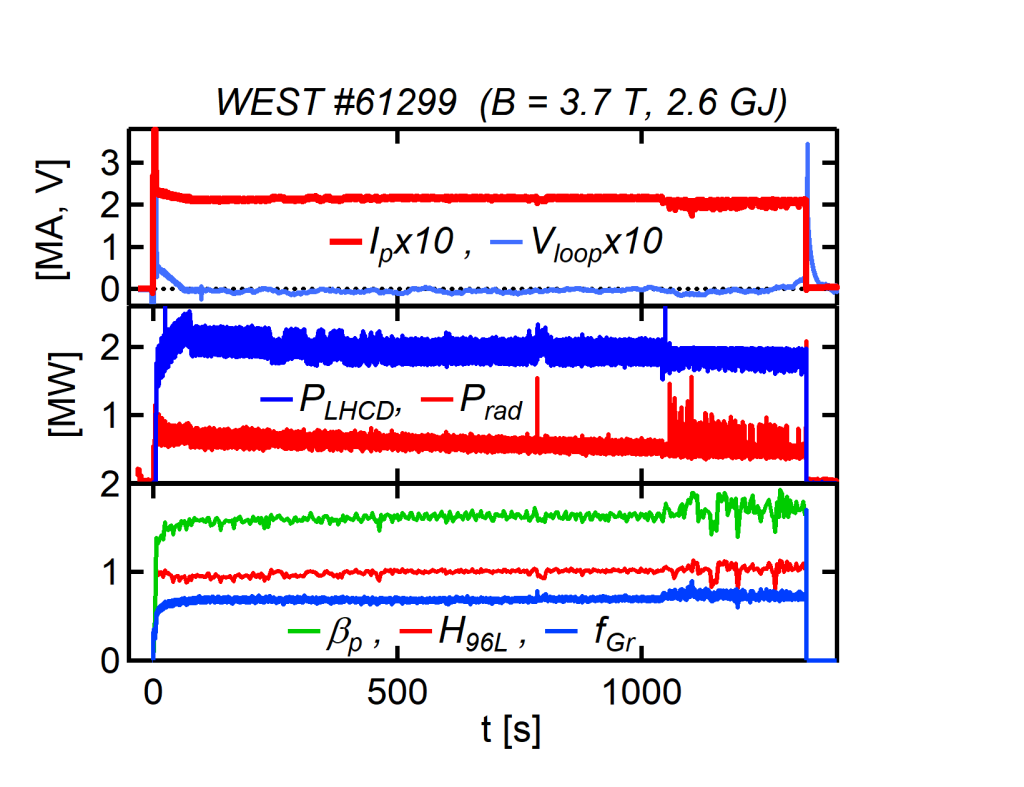
During this plasma discharge, the injected heating power is adjusted in real-time to maintain a plasma current of 215 kA while the plasma density is controlled at 2.3 1019 m-3 by a system of hydrogen injection using piezoelectric microvalves.
Around 1040 seconds, one of the seven klystrons that power the heating antenna suddenly stopped, and the plasma reorganized into a new regime until the 1337th second, when the LH system stopped, ending the plasma. Many data are still being analysed to better understand the plasma’s behaviour.
The following day, the second day dedicated to long-duration plasmas focused on deuterium plasmas. The best plasma of the day lasted 921 seconds, again demonstrating the robustness of the plasma scenario and the different control systems. Indeed, sustaining plasmas for such long durations requires real-time control systems that can react to events affecting the plasma, as well events impacting the components facing the plasma, including unexpected overheating.
The WEST experimental program continues with the objective of increasing the plasma heating power to, on the one hand, transition into the improved confinement mode envisaged for ITER in its DT phase, which will require adapting the plasma control schemes, and on the other hand, to increase the power on the components facing the plasma and simulate higher fusion powers.
The ambition is to increase the heating power from 2 MW to 10 MW, still over durations of the order of 1000 seconds, a power that corresponds to a fusion power of the order of GW in a machine the size of ITER. This will allow the evaluation of the lifetime of the tungsten components facing the plasma in these extreme conditions.
Mastering this inherently unstable plasma over long durations is a true technological challenge and an essential prerequisite for controlling a self-sustained plasma driven by fusion reactions, as will be the case in ITER, and ultimately for producing fusion energy on an industrial scale.
